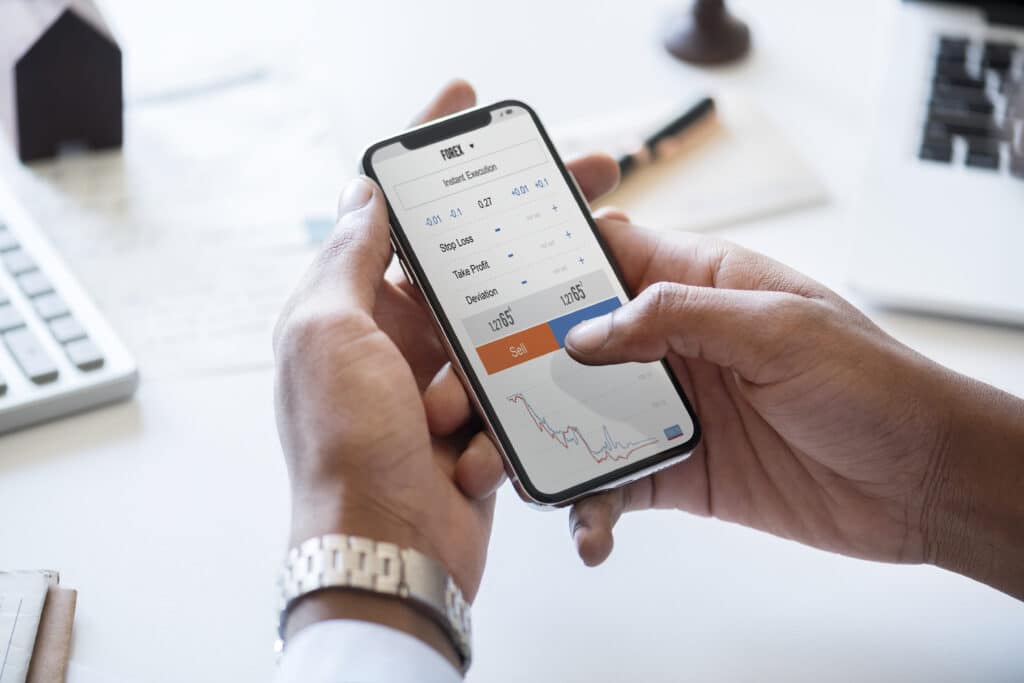Many businesses that employ text message marketing are motivated by the impressive SMS marketing open rates compared to email. A frequently cited statistic is that SMS open rates are as high as 99%, compared to email, which is closer to 20%. You may be wondering how reliable these numbers are. Let’s take a closer look at SMS open rates and see if they really do approach 99% as well as what factors determine open rates.
Do SMS marketing open rates really exceed 99%? Research shows that open rates for text messages are as high as 98% to 99%, compared to email, which is only about 20% This is one reason that many businesses are starting to use SMS marketing. However, open rates depend on several important factors.

Why Are Open Rates So High for Text Messaging?
It’s well established by now that people are more likely to open a text message than an email. There are several reasons for this.
- Text messages are shorter. In today’s fast-paced world, people value brevity. Someone is more likely to read a short text message and postpone reading emails, which tend to be much longer.
- It’s easy to read text messages on the go. People carry their phones everywhere. While many users now read email on their phones, some still use their computers for email. Even laptops aren’t carried around nearly as much as phones.
- Higher perceived value. Text messages are more likely to be seen as social or containing important information. Because such a high percentage of email is either commercial or outright spam, it’s not as highly valued.
- Texting is preferred by millennials and Gen Z. For people brought up in the age of smartphones, texting is the most convenient way to communicate. Although younger users still use email, they prefer texting for casual conversations and to exchange timely information.
Even though we’re constantly hit with statistics on metrics such as open rates, it’s very difficult to be precise. Open rates for both email and texting depend on factors such as geography, industry, time the messages are sent, targeting, and countless other factors. Nonetheless, we do have plenty of data to provide a general idea of open rates.
Crazy Egg reports that SMS open rates are as high as 98%. As they report “as high as,” this suggests that 98% is at the upper end of the spectrum. However, since the upper end of the spectrum for email is around 30%, that’s still quite impressive.
Why Are People So Receptive to Text Messages?
People don’t only open text messages consistently, they open them fast. With email, people often wait hours before opening messages, if they ever open them at all. By contrast, 90% of text messages are read within 3 minutes of delivery.
The fact that people open messages promptly makes texting extremely valuable for time-sensitive and last minute offers. Examples include bars and restaurants advertising specials, events such as open mics, concerts, and other performances, or a virtual conference or webinar.
The high open rates for SMS are directly related to how people feel about texting, especially compared to email and other forms of communication and marketing. For a variety of reasons, customers actually like receiving texts. Digital Marketing Magazine reveals that 75% of customers welcome text message offers sent by businesses.
Email is still a valid way for businesses to stay in touch with customers. However, the way people think about email has changed over the last 20 years with the increase in competition and the proliferation of spam.
One reason that SMS messages are trusted more than email has to do with strict enforcement of regulations by the TCPA (Telephone Consumer Protection Act). While there are spam laws regulating email, spammers can get around these with a variety of tactics, such as sending bulk emails from proxies that disguise their location. With SMS, it’s much harder for anyone to circumvent laws as texts can be traced to specific carriers. Hence, the amount of spam via text is extremely low compared to email, which means people aren’t as suspicious of text messages.

SMS messages are not only more eagerly opened than emails, but also outperform other types of messages, such as phone calls or instant messages sent on chat and social media apps. SMS messages, in fact, have a 209% higher response rate than email, Facebook, or phone calls.
Messages sent on chat platforms such as Facebook suffer from similar concerns as email. Unsolicited IMs on Facebook, for example, are associated with spam and scams.
What Factors Impact Open Rates?
As we noted, email open rates are significantly lower than those for text messages. However, it can be instructive to look at some of the statistics regarding email marketing, simply because it’s been studied by so many for so long. You can apply some of these lessons to text marketing.
It’s not quite accurate to look at email open rates as a precise number, as it varies quite a bit by industry. According to MailChimp, average open rates range from around 15% for vitamin supplements to over 28% for government. The average for most industries is closer to 21% in the United States.
The highest open rates are for organizations such as religion, the arts, and government, where the messages tend to be less promotional and subject lines are less likely to be labeled spam (either by mail servers or the recipients). This points to how important it is to target your audience and provide them with information they’re eager to receive. This principle applies to SMS marketing just as much as email.
Do SMS Open Rates Translate Into Conversion?
When it comes to any type of marketing, what really counts are conversions. Depending on the business and the specific offer, a conversion can mean many things, such as:
- Buying a product or service.
- Signing up for an offer such as a download or free trial.
- Making an appointment.
- Redeeming a coupon.
It’s difficult to measure conversion rates from one platform to another, as there’s such a wide variety of actions that can be tracked. However, there’s one important area where SMS comes out way ahead of alternatives —coupon redemption.
Coupons were originally found in newspapers and flyers, as well as handed out by supermarkets and other stores. Today, they are more likely to be sent digitally. Getting customers to redeem coupons is an effective way for businesses to boost sales. It turns out that coupons delivered by SMS are redeemed 10 times more than other types of coupons.
This is, of course, related to open rates. It also speaks to the higher value many recipients place on text messages compared to other types of messages. Coupons sent via email are likely to be lost in the deluge of offers that flood inboxes daily. Customers who have opted into receiving text messages, however, welcome coupons to help them save on goods and services they already buy.
Making SMS Part of an Omnichannel Marketing Strategy
Making the most of SMS marketing doesn’t mean that you can discard other types of marketing. Text messaging, in fact, works best when combined with other strategies in an omnichannel strategy that integrates multiple touchpoints.
Most customers today are active on many devices and channels. Rather than thinking of text messaging, email, and social media as competing with one another, it’s more helpful to look at them as complementary.
In many instances, businesses send text messages to get customers to visit a website, a Facebook page, or watch a video on YouTube. Email and text messaging can also be used together. Invite email subscribers to sign up for your SMS list and vice versa.
The more ways businesses have to contact customers, the more likely their message will get across.

How Can You Improve Open Rates?
Although open rates for SMS can be as high as 99%, in practice this depends on many factors, just as it does for email and other modes of communication. This suggests that you can improve open rates by taking appropriate actions. The following are some ways to maximize both open rates and conversions for text messages.
- Find the best time to text people. Just as in email marketing, the time of day can impact open rates. This depends to some extent on your audience and your message, of course. For example, a restaurant sending out messages about daily specials will want to time these messages so people get them before lunch or dinner. Businesses can test sending messages at different times of day and days of the week to find the optimal timing.
- Open the message with compelling words. With email, the subject line has a lot to do with whether or not people open a message. With text messages, there’s no subject line but recipients can usually see the first few words of the message. These words, then, act as a subject line. It’s good to open with the main benefit, whether it’s savings or an interesting event.
- Provide real value. Customers are more likely to open and take action when the sender has proven their value. Sending too many messages or messages that don’t deliver value will reduce responsiveness and may eventually lead to customers unsubscribing. On the other hand, consistently sending high value messages will result in better open rates and conversions.






